At this year’s Mobile World Congress (MWC) in Barcelona it appears that the leading handset manufacturers were outshone by the telecommunications networks who spent the show pushing the development and deployment of 5G services.
While talk of 5G has been on-going for many years at MWC it appears, perhaps, that the prospects for 5G and the next generation of mobile networks and services are getting close to becoming a reality.
US telecom carriers and Asian networks such as T-Mobile USA, Sprint and SK Telecom all announced that they would begin testing live networks later this year and several used Barcelona to demonstrate the possibilities of the technology via demonstrations at their booths.
US networks have certainly been the most active in terms of planning for 5G with several launches expected this year and speaking at Mobile World Congress, Ronan Dunne, chief executive of Verizon Wireless suggested that 5G would help accelerate the levels of investment being seen in the networks but also provide operators with the opportunity to differentiate themselves from their competitors.
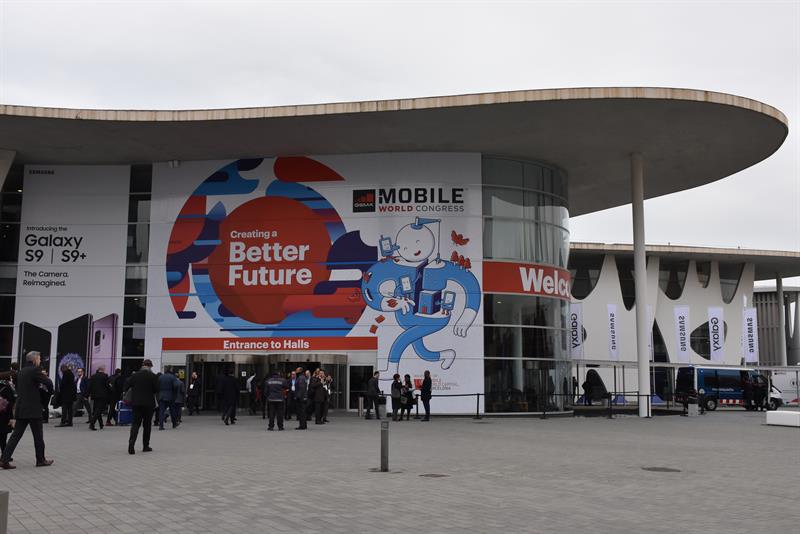
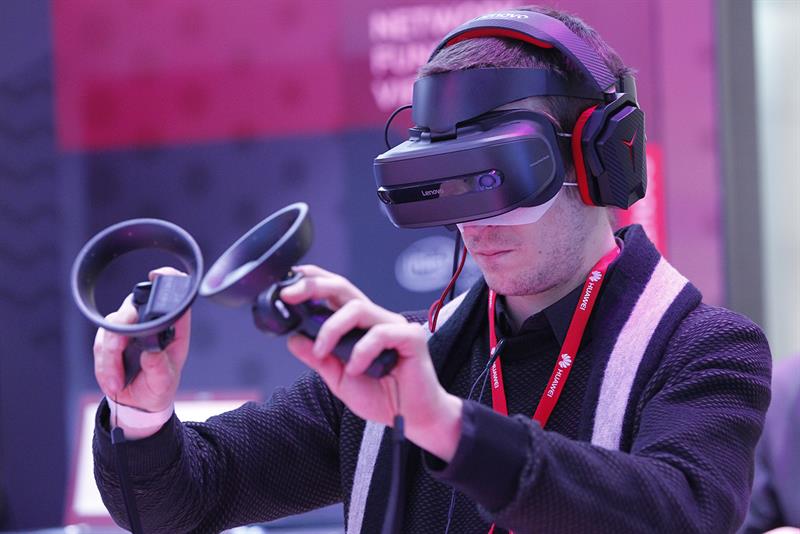
In contrast to US operators, and their Asian opposite numbers, European operators appear stuck in the slow lane when it comes to 5G. Slow regulatory reform is blamed for making it harder for carriers in Europe to justify the costs associated with upgrading their networks to deliver 5G.
For many companies in the mobile space such as ARM, Qualcomm and Intel their focus appears to be less on the smart phone consumer market, and more around the broader digital transformation and its impact on businesses and industry. For example, how the use of 5G-enabled smart devices in the work environment could impact on working practices and productivity.
It appears that for those companies it’s businesses, and not consumers, that are starting to weigh up the benefits of the new networks.
Ericsson, for example, partnered with automation company Comou to demonstrate 5G-enabled factory robots capable of working wirelessly and of carrying out maintenance in real-time.
While regulators outside Europe seem to ‘get this’ i.e. that 5G is going to be more about industrial applications than consumer devices, business leaders and industry watchers in Europe are highly critical of policy makers in European Union for not understanding this and, as a result, are failing to create an environment for investment that’s being seen elsewhere.
Prior to MWC, John Strand, of Strand Consulting warned that ‘over-regulation’ and a £130billion gap in investment was holding back 5G in Europe.
But it’s not just the regulatory environment in Europe that’s an issue. Many investors in the telecoms space remain doubtful about the value of 5G and are unlikely to move until the consumer business case becomes more apparent.
5G NR standard
The 3GPP officially released a first draft of the 5G NR standard at the end of last year and this is being seen as an important first step in the setting up new 5G ecosystems that will enable manufacturers and networks to test new equipment so that any implementations will conform and achieve the interoperability that’s required.
“The work of the 3GPP and 5G standardisation is crucial,” explained Sarah Yost, Principle Product Marketing Manager: SDR, from National Instruments. “The ratification of the new standard will support new 5G devices, the infrastructure and the delivery of innovative applications. It will help to support the first round of product innovation which will be a key indicator of what 5G could deliver in the future.”
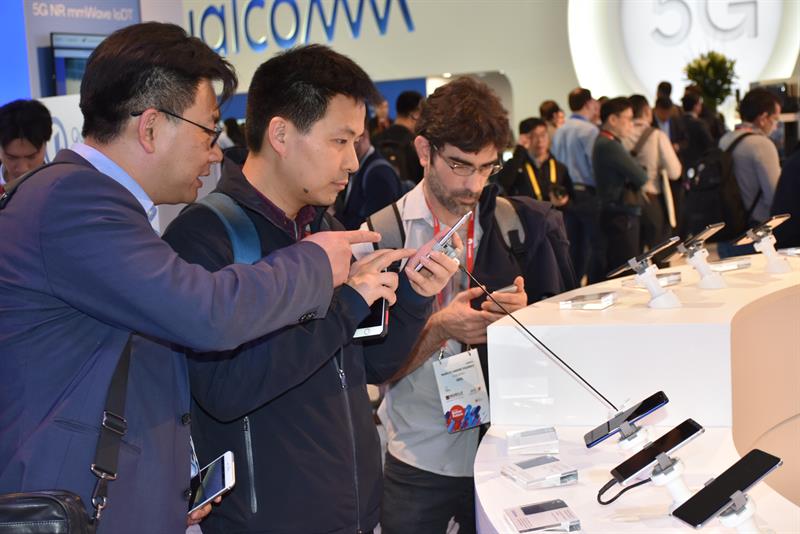
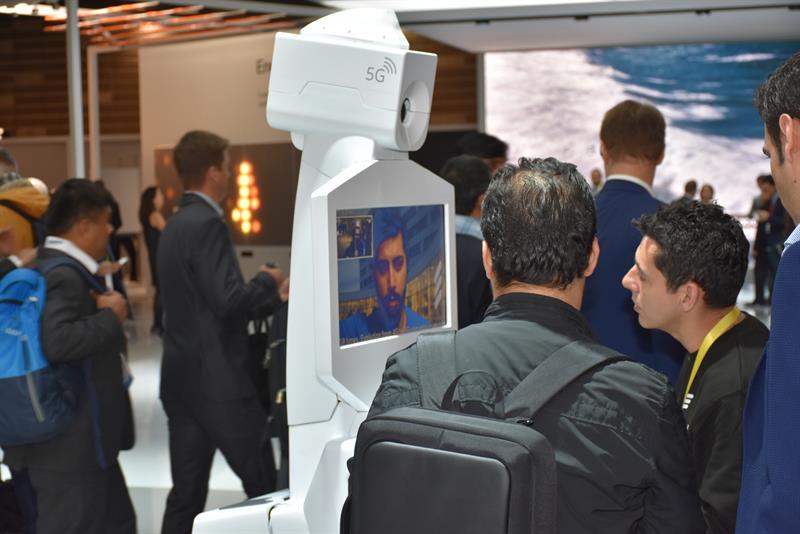
| Above: While MWC was hailed as a success, with more than 100,000 visitors, does the event still set the agenda or has that mantle been passed to CES? |
Interoperability device testing (IODT) is a vital element of that and will determine whether a base station and device can establish and maintain a ‘robust’ communication link that can deliver 5G performance.
National Instruments has announced that it is working with Samsung in a collaboration on IODT in which Samsung’s 5G-NR capable commercial base station connects with a test UE developed by NI at 28GHz over the air and in real time. UE exchanges are tested to see whether the link with base stations is valid and meets the specifications laid down by the 3GPP in terms of functionality and performance.
Further developments announced at MWC included one from CEVA, a licensor of signal processing platforms and artificial intelligence processors. It said that it was supporting Nokia in the development of its ReefShark baseband System-on-Chips (SoCs), which are set to be deployed to support 5G wireless infrastructure.
CEVA revealed that it would be adapting its widely-deployed XC architecture framework to address the massive increase in signal processing complexity in multi-RAT (Radio Access Technology) network architectures.
Based on the latest 3GPP 5G New Radio specifications, the Nokia ReefShark looks to reduce the size, cost and energy consumption at each cell site, while at the same time boosting the intelligence and performance of massive MIMO antennas.
ReefShark can boost baseband compute capacity through plug-in units fitted into Nokia’s AirScale baseband modules, which are software-upgradeable to full 5G functionality and can triple the throughput to 85Gbps per module.
Commenting, Henri Tervonen, CTO and Head of R&D Foundation, Mobile Networks, Nokia said, “We have collaborated closely with CEVA on developing a custom version of the CEVA-XC for ReefShark, adopting new practices, methodologies and advanced process nodes that will allow us to fully realise the capabilities that the new 5G standard will bring.”
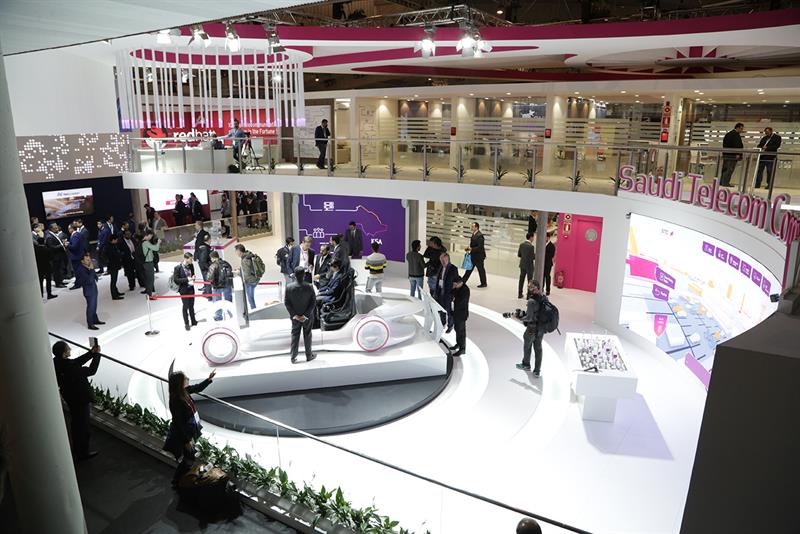
5G is expected to revolutionise mobile communications through the deployment of millimeter wave technology, massive MIMO and beam-forming all of which will allow for far greater precision, much higher data rates and significantly enhanced levels of network capacity.
According to most industry watchers because of the massive overhaul to existing networks that will be required by the introduction of 5G, most use cases will be in the industrial space as suggested earlier, such as in robotics, autonomous vehicles and virtual reality, rather than in consumer space, at least to begin with.
At MWC Qualcomm Technologies unveiled its Snapdragon 5G Module Solution to support original equipment manufacturers (OEMs) looking to capitalise on 5G technologies.
By aggregating the fundamental components of 5G into simple modules, Qualcomm said it wanted to simplify end device designs, lower total cost and accelerate new OEM entrants’ ability to adopt 5G in their systems.
According to Dr. Roawen Chen, senior vice president, QCT global operations, Qualcomm Technologies, “As 5G aims to vastly expand wireless enablement into new vertical markets, our 5G modules make it simpler for newer entrants to take advantage of 5G networks and the new opportunities they will enable.”
These modules integrate more than a thousand components across a few modules and will allow OEMs to combine a few simple modules to cover digital, RF, connectivity and front-end functionality in their designs.
According to Qualcomm customers will see a significant reduction in footprint of up to 30 percent compared to designs using discrete components.
Also at MWC Qorvo, a developer of specialist RF solutions, announced that it was currently testing the first commercially available 5G RF front end module for mobile devices operating in the 3.4GHz spectrum, which would support customers designing and testing 5G technologies for early deployment in 5G mobile devices.
Smartphones
Prior to MWC Qualcomm’s president Cristiano Amon said that the company was, “Working with a growing number of OEMs that have smartphone launches scheduled for the first half of next year.”
That could explain why, at least at this year’s show, the handset industry, generated so little interest. But, that’s not to say that new phones weren’t on show.
Many of the innovations from the likes of Samsung, Sony and Nokia were, however, limited in scope and raised the question of whether innovation in the mobile space has slowed to a virtual halt?
Samsung unveiled the new Galaxy S9 while Nokia continued with the successful ‘retro’ theme of last year when it launched the 3310. This year it unveiled the ‘Banana’ phone or the 8110 Matrix phone with a sliding cover.
Nokia is an interesting example of a once dominant phone maker going into a steep decline with the advent of the iPhone, but making a strong comeback. Last year it sold over 70million devices, helped in no small part by the release of the 3110.
The decision by the company’s owner HMD Global to bring back another old favourite, together with a range of new smart phones, may be risky but the 8110 is inexpensive and comes with a range of apps including Google Assistant, Google Maps, Twitter and Facebook. It’s most eye-catching feature, however, has to be the claim that it can provide standby time of up to 25 days.
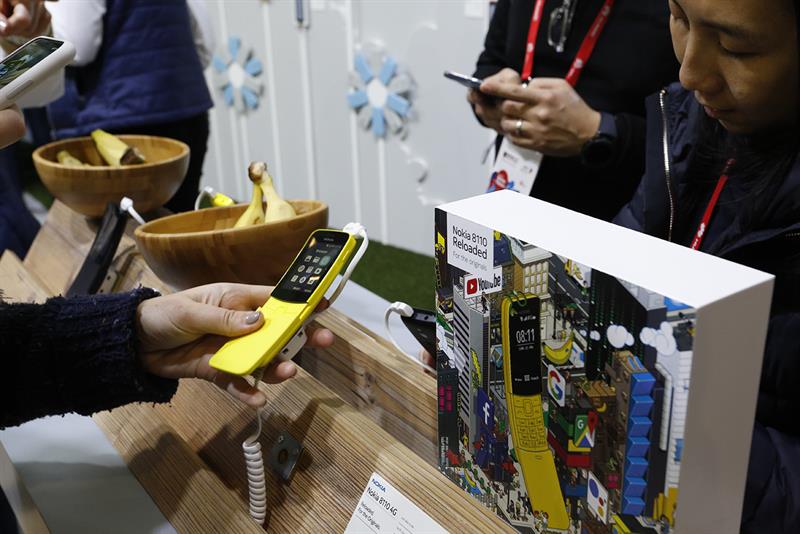
Samsung focused on the camera in its new mobile devices. The Galaxy S9 Plus and S9 phones came with a new duel aperture camera, as well as a fingerprint reader.
However, there was criticism of the incremental nature to the improvements announced by Samsung and many of the other phone manufacturers.
| Above: Once the dominant mobile player, Nokia is making a comeback by adopting a 'retro' theme with its new range of phones |
Critics said that unlike the launches of the S6 and S7 in previous years, where the differences were obvious and significant, the improvements to the S9 were less obvious although there was certainly more intelligence behind the screen and the S9 can now be connected to a screen, mouse and keyboard and can offer a tracking pad capability.
What was true of many of the devices on offer though was that they all looked very much the same and while they offered better screens and cameras it appeared that most improvements were incremental in nature. That could suggest that device manufacturers are coming to terms with the fact that consumers are no longer looking to replace their phones as often and are more focused on getting better deals with network providers.
Impressing consumers is certainly getting much harder, especially when today’s devices are all about consuming content.
The Groupe Spéciale Mobile Association (GSMA) which hosts MWC, devoted much of its Innovation City booth to the possibilities for 5G technology.
So rather than handsets being the centre of attention at this year’s show the focus appeared to be on what 5G could drastically improve, whether that was entertainment, demonstrating the difference in video streaming quality using 4G and 5G network; virtual reality, full-body immersive VR experiences were on display at MWC demonstrating that even more gadgets would be required to track different body motions, as well as even more processing power to accurately render movements in real time, or transportation.
Among those exhibiting the benefits of 5G for transportation was a flying drone capable of carrying a passenger, that will debut this year in Dubai carrying passengers from the airport to their hotels.
While MWC has been hailed a success by its organisers, following the attendance of more than 107 000 visitors from 205 countries and territories and with almost 8,000 CEOs in attendance, critics believe it has lost its edge.
Is it still the event that shapes the industry or should we be turning our focus on the Consumer Electronics Show (CES) in Las Vegas?
Whichever show takes the mantle what is true is that as mobile technologies have now become ubiquitous and integrated 5G is expected to play an important part in the future mobile landscape. A lot of people are betting on it!













